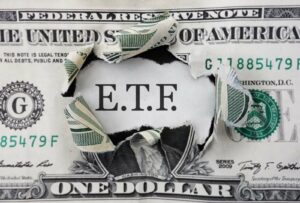
After an extended drum roll, Joe Biden has finally found his running mate in California Senator Kamala Harris. We estimate that Harris and her husband have more than $10M in assets, with a little less than half in a variety of disclosed investment vehicles and the remainder in personal real estate. That figure would place Harris in the top-15% of Senators by net worth.
Most of Harris’s disclosed assets are managed by her husband, Douglas Emhoff, who also seems to hold title to and be the source of the majority of their wealth. Emhoff is a Los Angeles lawyer who practices in California and Washington, DC. Although he is a partner at his law firm, his salary is non-specified beyond a checkbox noting it as greater than $1,000. It is possible (and fairly common among partners at professional services companies) to minimize one’s current salary and in order to maximally fund a customized pension plan to allow tax-deferred retirement savings. However, absent further disclosure on the law firm’s retirement plan and Emhoff’s compensation, we cannot determine how aggressively they have used these strategies beyond noting the existence of Limited Liability Partnerships that could enable such a strategy.
We do know that Harris has not made any recent stock transactions and their portfolio is a fairly diversified one of mutual funds and ETFs, with no individual stock holdings. This marks a change from 2018 and before, when individual stocks positions made up a significant portion of the couple’s holdings. Political candidates often shift their holdings into mutual funds and ETFs and away from individual stocks as part of their pre-election housekeeping and to reduce the perceived conflicts of interest associated with holding individual stocks.
None of this is to say, however, that Harris and Emhoff live a particularly frugal lifestyle – Emhoff’s assets in his firm, DLA Piper, are valued between $500,000 to $1 million (as well as two other large assets listed under the LLPs Venable Capital and Whitwell Jacoby Emhoff) and Harris’s own estimated investment net worth is $2.4 million. The couple also own three reported residences in Los Angeles, San Francisco, and Washington DC worth at least $5 million.
One of Harris’s largest assets comes from a San Francisco deferred compensation plan from her time as a state prosecutor. Deferred compensation plans, rather than paying an entire salary up front, allow the participant to voluntarily invest a portion of their pre-tax earnings into a selection of investment funds. By paying into the plan over time, deferred compensation plans can add to retirement savings and supplement pension benefits.
The entity breakdown shows the holding vehicles Harris and Emhoff use – primarily mutual funds and ETFs. Harris’s earlier disclosure reports from 2018 show a much wider use of individual stocks, but they have since transitioned to only investing in funds (her most recent disclosure doesn’t list a single individual stock or bond) with their disclosed investments.
As for the breakdown by asset class, the most notable takeaway is how little we know about assets held in Emhoff’s LLPs. For example, it has been reported that Harris and Emhoff use a trust to hold some of their assets, but that trust is not included in this disclosure. Moreover, Harris and Emhhoff are reported to own three properties (in Los Angeles, San Francisco, and Washington), and they list three mortgages in their liabilities section with none of the properties listed as a real estate investment asset. We presume this is because personal residences can be excluded from annual disclosure reports.
This is not to say there is anything unusually suspicious (by the standards of wealthy politicians) about Senator Harris’s financial disclosures. Rather, their disclosures and the structuring of their assets highlights the limitations of current disclosure requirements. Most of their assets are ostensibly structured for long-term investing and retirement, but many of the details regarding their precise investments remain unknown.





